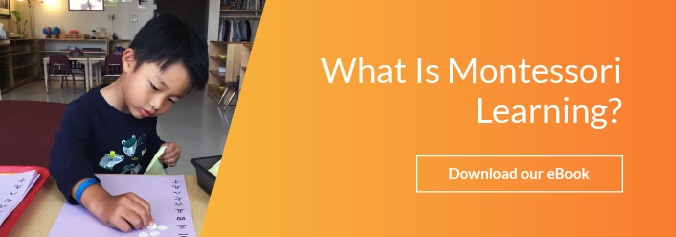As a parent or caregiver, you know that learning can happen in a variety of situations. Your child can learn at home or out in nature simply by having new experiences. And, if you are intentional, you can turn seemingly ordinary situations into beneficial learning opportunities. Dr. Maria Montessori, the creator of the Montessori Method, recognized the value of learning through everyday tasks. She believed that learning is not limited to the four walls of the classroom but should be a part of every aspect of life. With this belief in mind, Montessori teachers use everyday tasks to help students learn. The youngest Montessori students start their education by practicing tasks of daily living and learn valuable lessons along the way.
Cleaning up after oneself
Students of all ages in the Montessori classroom are expected to clean up after themselves. This responsibility means clearing their workstation, putting tools they used back in the right place, and organizing supplies, so they are easy to find for the next person. This seemingly simple task can be used to teach several valuable lessons about being a good citizen and caring for others. Students learn that their actions impact others when they fail to put supplies in the proper area. They also learn to work with others by cleaning up after group projects. Teachers in the Montessori classroom are intentional about using the task of cleaning to teach students valuable lessons about cooperation and consideration.
Counting, measuring, adding, and subtracting
There are several ways that important math concepts like counting, volume, circumference, addition, and subtraction can be taught through everyday tasks. Passing out supplies to peers, dividing tasks amongst group members, pouring water into a bowl, and tying a string around a container are all everyday parts of life that Montessori teachers use to teach math concepts to students.
Helping and working with others
Students get multiple opportunities each day to help and work with others in the Montessori classroom. Teachers provide opportunities for students to serve one another and learn to resolve conflicts. For example, in mixed-age classrooms, teachers allow older students to help younger students when they have questions or need help with a concept. This action helps the older student become leaders and creates a sense of community between both age groups. Teachers in the Montessori classroom also use conflicts and misunderstandings as learning opportunities. Students are expected to try and come up with a solution to their problem before involving the teacher. This expectation teaches independence, responsibility, and problem-solving.
Montessori teachers view learning as something that can be done in a variety of situations. Teaching is not limited to the classroom or formal lesson plans. Montessori teachers have the freedom to use everyday tasks and situations to help students learn important lessons and concepts.












Let us know what you think about this post
Put your Comment Below: